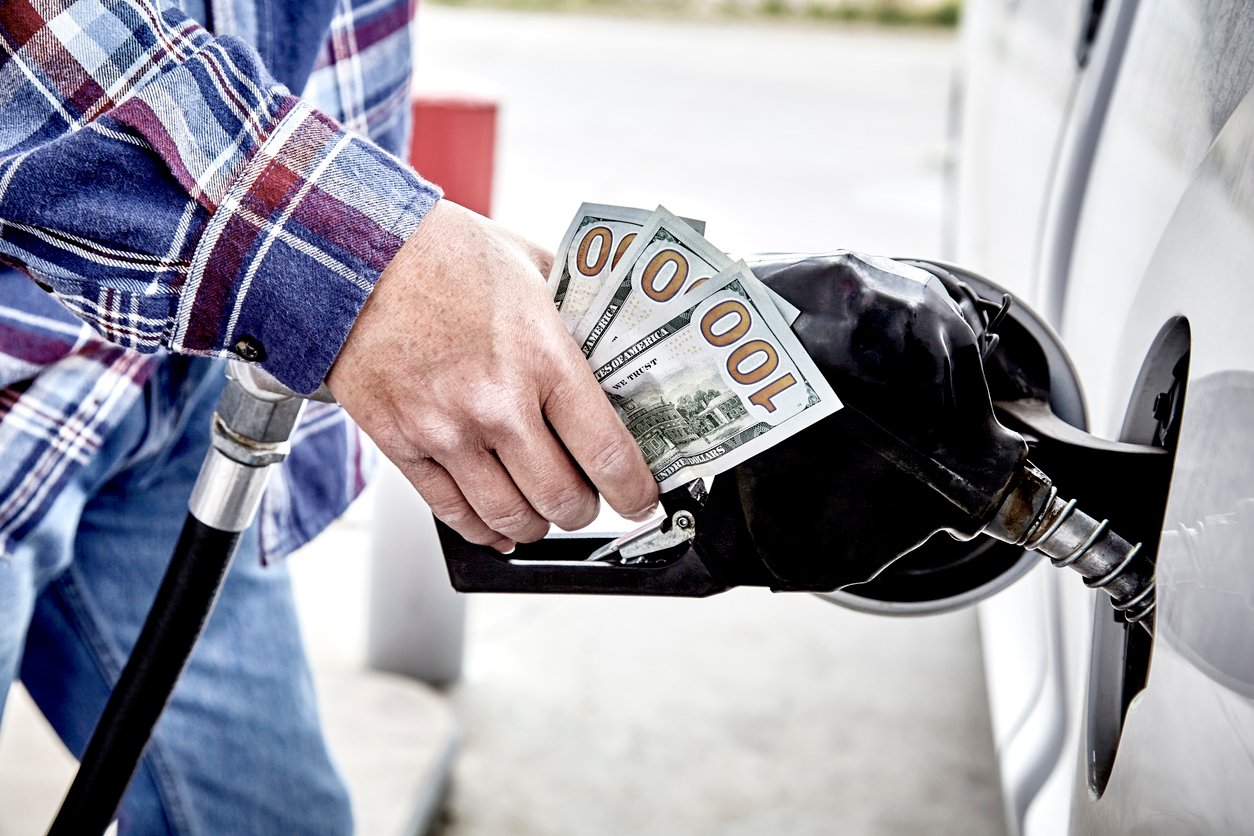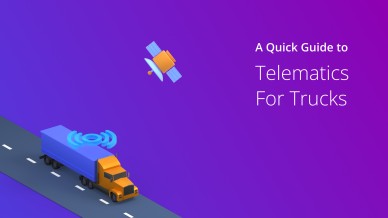Your drivers are getting the job done. They are moving items from Point A to Point B as instructed and orders are being delivered on time. However, instead of profits, you are spending a lot on the activities of the field workers. You are almost going in the red, mainly because of the following three factors:
- Overtime payments
- Fuel expenses
- Vehicles’ scheduled maintenance cost
Most field service businesses in the US are familiar with the above scenario. And, if this is keeping you up at night, you too might be looking for ways to control your fleet’s total cost of ownership (TCO), minimize expenses, and improve the bottom line. However, identifying new ways to reduce the costs associated with safety, fuel, and maintenance is challenging. This is where vehicle telematics can help. The rich telematics data can be used to drive fleet operating costs down and increase profitability.
A vehicle telematics system like Silent Passenger Telematics is one of the most important investments you will ever make. It will allow you to track vehicle locations, monitor vehicle diagnostics, keep an eye on driver behavior, track fuel usage, and plan optimized routes. So it is no surprise that an increasing number of field service businesses in the US are already saving millions of dollars every year just by gathering and analyzing telematics data. Thus, even though assessing and analyzing telematics data sounds like a simple strategy, ignoring this data could prove dangerous and expensive.
What Is the Cost of Ignoring Telematics Data?
Traditionally, field service businesses focus on Return on Investment (ROI), but the cost of ignoring COI is also important. ROI and COI share the same objective: to maximize profitability. However, ROI is all about looking for strategic ways to invest money, whereas COI is based on maximizing savings and minimizing costs.
Want To See For Yourself How Route4Me Can Boost Your Profits?

Simply put, COI is the money left on the table. It can also be explained as the savings a field service business loses when it fails to implement a strategic business tool that would have improved efficiency and increased profitability.
For instance, your vehicles’ poor condition could cost you a lot of money in the form of repairs and lost productivity. And, in some situations, you could face legal hassles and pay fines too.
But, why is keeping a tab on COI so important? Feet management costs, such as fuel, vehicle maintenance, driver salaries, and insurance premiums, eat up the majority of a company’s operating budget. Now, scheduled maintenance is an essential cost, but unplanned repairs caused by your drivers’ unsafe driving habits are not.
Implementing a telematics solution will allow you to monitor vehicle usage and your drivers’ on-road conduct in real-time so you can avoid such costly unplanned repairs, reduce fuel consumption, and cut costs, which is what COI is all about.
Calculating Your Fleet’s COI
To calculate COI, you will need to identify cost reduction opportunities that will result in potential fleet cost savings through the effective implementation of telematics. Below are some of the critical areas to focus on.
Driver and Vehicle Safety
According to the National Highway Traffic Safety Administration (NHTSA), 37,133 people were killed in motor vehicle crashes in 2017 alone and 3,166 of these deaths were due to distracted driving. Also, according to a report by the Occupational Safety and Health Administration, vehicle crashes cause a death every 12 minutes, an injury every 10 seconds, and a crash every 5 seconds on US roads.
Employers often bear the cost for accidents and injuries that occur both on and off the job. As stated in the report by the Occupational Safety and Health Administration, vehicle crashes cost employers more than $60 billion annually in medical care, property damage, legal expenses, and lost productivity. These costs will be much higher when you include the indirect costs of lost clients, wasted productivity, and reputation damage.
So, it is in your best interest to reduce your fleet’s risk of collision by tracking your drivers’ risky driving habits. It is best to set best practices and standards with your drivers and use telematics data to identify improvement areas and train your drivers accordingly. Implementing a driver safety program will not only help reduce the risks faced by drivers, but will also protect your bottom line.
Fuel Costs
Fuel is one of the biggest expenses for field service businesses. Aggressive driving, speeding, and extended idling reduce fuel efficiency and cut into your profit margins. Using telematics data, you can identify those drivers who are engaging in unsafe driving practices and alert them to slow down or turn off the engine instead of idling. While these changes may seem minor, they can result in significant fuel savings with GPS fleet.

As per one survey, almost 89% of field service businesses that use telematics save on fuel expenses. According to another report, businesses that use telematics were able to reduce fuel consumption costs by more than 13%. Now, add this to the potential savings made on insurance premiums, unplanned vehicle repair costs, and fuel wastage and you will save thousands of dollars each month.
Vehicle Maintenance and Repair Costs
Vehicle maintenance is crucial for your business’s success. If your vehicles are frequently breaking down on the side of the road, you are losing time and money. Worse yet, when one of your vehicles gets sidelined for unscheduled repairs, you miss out on at least a day’s worth of deliveries. This equates to hundreds of dollars in lost potential revenue. Now, you can probably see the potential COI of scheduled repair taking its toll on your profitability.
GPS telematics can help your vehicles stay in a perfect state by sending you alerts when trouble codes arise. For example, such systems can detect if the engine is working harder by comparing it to its past performance or set benchmarks. The system can also send you notifications, alerting you of each vehicle’s repair and maintenance needs. So, using telematics to improve driving behavior will pay off in spades as you will begin to see less wear and tear and less maintenance.
Also, after you have ensured that the vehicles are adequately maintained and the trained drivers are following safe driving practices, the likelihood of one of your drivers causing a motor collision on the roads decreases. Such clean driver records and safe driving habits will result in lower insurance premiums and your insurance company may also reward you with lower or discounted premiums just for deploying telematics, resulting in more cost savings.

Vehicle Use and Productivity
The vehicle-tracking capability of telematics, in addition to its other functionalities, provides transparency into your operations. And so it is no surprise that, according to one survey, 95% of field service businesses reported an increase in productivity after adopting telematics.
With telematics data, you will know how each vehicle of your fleet is used. By matching the size of the fleet to the actual demand, you can also improve vehicle use, reduce fleet size, and save costs. Information like the miles traveled, number of trips, and engine hours will also allow you to manage seasonal spikes in demand efficiently.
Real-time vehicle utilization data will also help you plan dynamic deliveries to accommodate last-minute changes in customers’ demands or availability. And, access to real-time vehicle location data will allow you to inform your customers about any changes in the delivery schedule or reroute another driver who is nearest a customer’s location to make the delivery.
Route Optimization
Inefficient route planning can erode your fleet’s profitability. When you use a driving directions software that supports telematics systems, you can plan well-optimized routes which are free from traffic, bad weather, sunrise/sunset, construction, one-ways, and more so that your drivers always show up on time.
According to a study, telematics dramatically reduces the travel times for field workers and drivers. As per the survey, 92% of field service businesses using telematics reported improved travel times. This is because, when routes are optimized, the drivers spend less time on the road and more time on the job, resulting in more trips per day.
Does Telematics Constitute a “Big Brother” for Field Workers?
Field workers are often apprehensive about being “watched” at all times. It is usual for them to resist and have reservations about a new technology which they have never used. Field service managers often have a hard time coping with driver objections to tracking and reassuring them that vehicle tracking has a bigger purpose than just spying. In fact, the vehicle tracking system aims to ensure the safety of the vehicles and drivers, reward good performance, and improve productivity.
Luckily, by introducing and implementing the telematics program correctly, it is possible to avoid driver objection. Educating the drivers about the benefits of telematics, such as improved safety and reduced travel time, is essential to the overall success. The drivers also need to be informed that, if they engage in unethical practices like wasting fuel or not following traffic rules, telematics will track that behavior.
Conclusion
Telematics is not just a cost-saving methodology or tool and it is definitely not about being a big brother and keeping an eye on your field workers’ every move. Instead, it is about strategically optimizing your operations to keep drivers safe, stay compliant, and keep the bottom line healthy. Investing in telematics is an effective way to cut fleet operating costs, improve productivity, and run your field service operations like a well-oiled machine.
Want To See For Yourself How Route4Me Can Boost Your Profits?






